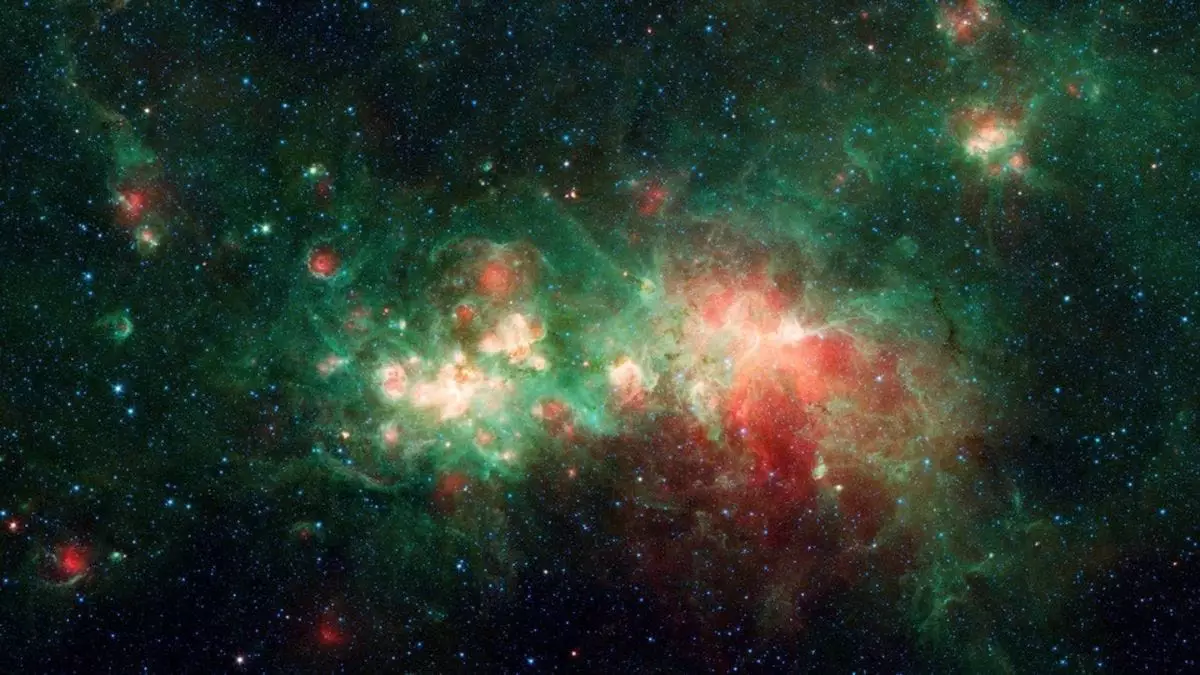Recent investigations led by a team from the University of Pennsylvania, including researchers Joshua Kim and Mathew Madhavacheril, shed light on an evolving understanding of cosmic structures. This research, which draws on data from the Atacama Cosmology Telescope (ACT) and the Dark Energy Spectroscopic Instrument (DESI), suggests a more intricate narrative regarding the universe’s development than previously assumed. The study underscores a discrepancy in how matter clumps in the universe, particularly during the last four billion years, challenging established models of cosmic formation.
The innovative approach of integrating ACT’s cosmic microwave background (CMB) lensing data with DESI’s mapping of luminous red galaxies (LRG) allows for a groundbreaking perspective on cosmic evolution. The ACT provides vital information about the early universe, specifically capturing signals from just after the Big Bang, while DESI enhances our understanding of the distribution of galaxies across time. By superimposing these observational datasets, the research team constructed a multidimensional framework to explore how cosmic structures have formed and changed over eons.
Understanding the Deviations
One of the pivotal findings, as published in the Journal of Cosmology and Astroparticle Physics, relates to the measurement of Sigma 8 (σ8)—a fundamental parameter for gauging density fluctuations within the universe. The analysis indicates a lower-than-anticipated σ8 value, suggesting that cosmic structures exhibit less clumpiness than standard cosmological models predict. While the relationships largely conform to Einstein’s general theory of relativity, this minor yet significant observation opens doors to discussions surrounding potential revisions in our understanding of cosmic dynamics.
Among the explanations for the observed discrepancy is the role of dark energy—a mysterious force propelling the accelerated expansion of the universe. The hypothesis posits that dark energy may be influencing the formation of cosmic structures in unforeseen ways, leading to the deviations noted in the researchers’ findings. While the data does not yet present sufficient statistical power to declare new physics, the possibility of unexplained cosmic mechanics encourages further dialogue and inquiry within the scientific community.
As astronomers eye upcoming advancements in observational technologies, such as the Simons Observatory, the pursuit of refined measurements remains crucial. These next-generation telescopes are expected to enhance our comprehension of the cosmos, clarifying whether the observed discrepancies reflect a random anomaly or invite a more profound reconsideration of existing cosmological paradigms. Thus, the pursuit of knowledge regarding cosmic evolution continues, driven by an unwavering commitment to unravel the mysteries of the universe. The collaboration among diverse research teams symbolizes the shared aspiration to decode the complex tapestry of cosmic history, calling for ongoing exploration and discovery in the fields of cosmology and astrophysics.

Leave a Reply